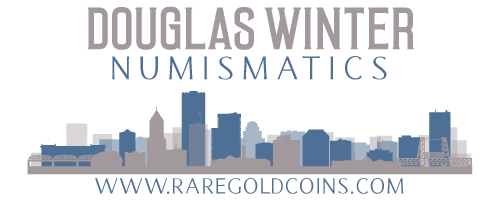The May Long Beach Show: A Report
/I have generally sworn off writing show reports as, to be honest, they are as boring for me to write as they are for you to read. At this point, I figured I’d do reports on the Big Two shows (FUN and ANA) and leave the other reports to my fellow Bloggin’ Numismatists. The recent Long Beach show, however, was interesting enough that I thought it required a little bit of ink.
As you may or may not know, Long Beach is a show that I’ve come to dislike in recent years. It’s become very slow from a business standpoint, I’m not crazy about the way its run and, quite frankly, if I hear them playing the Oldies soundtrack one more time I think I will rip out my inner ear canals.
But this Long Beach seemed a little bit different. Dare I say it actually had a bit of a buzz (?!?) and I think the crowd at the show, at least on Thursday when it opened to the public, was as large as any Long Beach that I can recall going back to the 1990’s.
Why was this Long Beach different from the last edition(s)? My guesses would be three fold. The first had to do with the fact that gold has risen around $50 in the past few weeks. There are a lot of bullion/generic buyers in Southern California and a strong gold market always seems to bring out these buyers. The second is better publicity. I don’t know this for a fact but I would assume that the show promoters tried something new to get buyers through the doors and it worked. Attendance was reported to be up by at least 30%. The third is renewed interest among collectors who have been on the sidelines for the last few years.
If you are a serious collector who has been in the market for at least a decade the last few years was the classic good news/bad news scenario. The good news was that the coins you bought in the early 1990’s probably increased in value. The bad news is that your market niche was probably flooded by deep-pocketed new collectors who trusted their advisors (be they auction firms, dealers or other collectors) but often got poor coins at inflated prices. Now that many of these new deep-pocketed collectors have fled the market, serious collectors can, once, again, buy coins without Nimrod Competition. This fact is, I believe, responsible in getting some of the collectors who had been on the sidelines for a while back in the coin game.
I’m not saying that the coin market has suddenly turned around and that the Good Ol’ Days are back. There is one major issue in the market that needs to be addressed before things become all warm and fuzzy again. There are a lot of truly awful coins overhanging the market. By this, I mean coins that are severely overgraded or coins that have really poor eye appeal or coins that have been laughably processed. Right now, it is hard to find anyone to buy these even at a major discount. This has created the sort of exaggerated two-tiered market that we haven’t seen in a while.
Let me give you an example. I saw Charlotte and Dahlonega gold coins at Long Beach in AU55 and AU58 holders that, in my opinion, are worth less than coins that are choice, original EF45 or AU50. This scenario is certainly not limited to the dated gold market. My point is, until some of the crappy low-end coins that seemed to be everywhere at Long Beach are taken off the market, they will act as artery cloggers that continue to make the coin market unhealthy.
That said, I thought it was a very pleasant surprise that the recent Long Beach show turned out to be as strong as it did. True, I came to the show with absolutely zero in the way of expectations, but it was nice to stay busy for a few days and sell a few coins.
It’s always been tough to buy at Long Beach and this show was no exception. After a few days of slogging and grinding, I was able to purchase a few neat items, including the following:
*One of the finest known 1854-O Quarter Eagles, graded MS63 by PCGS *A rare and choice 1798 half eagle in an NGC MS62 holder *A lovely, fresh 1840-D half eagle graded MS60 by NGC *The nicest 1884-CC double eagle I have owned in years, graded MS62 by PCGS *An interesting selection of affordable C+D mint coinage in EF and AU grades
All of these coins have been described and imaged and are on my website just waiting to go to nice new homes. Please visit me at www.raregoldcoins.com and look for the inventory that is marked “new.”











